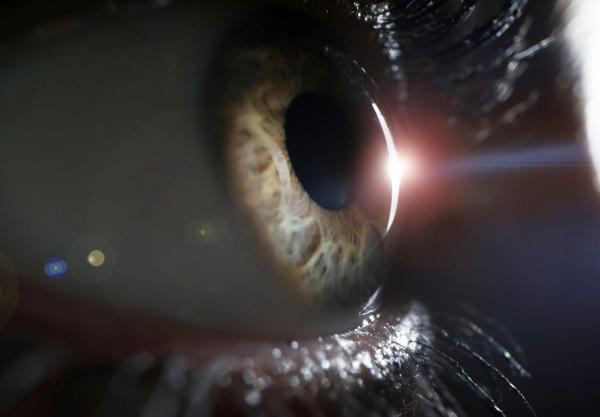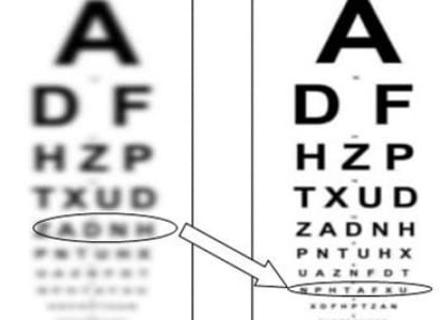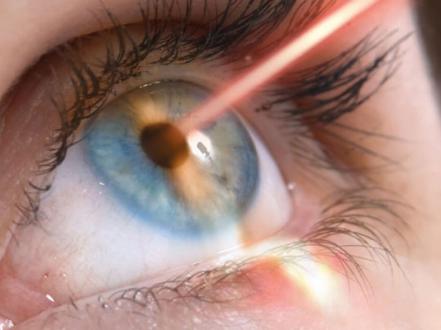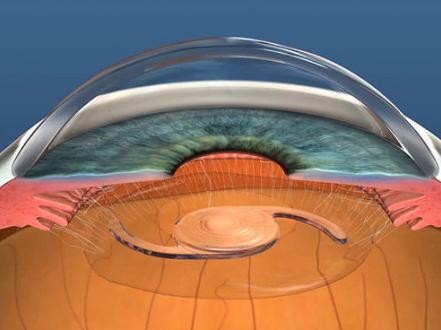What is 2RT™ therapy?
Retinal Rejuvenation Therapy (2RT™) is a revolutionary laser therapy using a gentle, short-wavelength laser. This method stimulates the natural healing response of the retina with a positive effect on the treatment of early and intermediate forms of age-related macular degeneration (AMD) and clinically significant macular edema (CSME).
2RT™ therapy allows treatment much earlier in the disease process. It slows the progression of the disease and preserves functional vision before permanent physical damage and vision loss occurs. In the case of CSME, 2RT™ eliminates retinal edema without causing collateral damage to the sensitive structures of the eye that are vital for vision.
The Basic Principle of 2RT™ Therapy
2RT™ uses nanosecond pulses of low-energy laser light, which are applied to the individual cells of the retinal pigment epithelium (RPE). The RPE is the layer of cells that is responsible for maintaining the retina, nourishing it, and removing metabolic wastes. Thanks to a very short pulse, there is no thermal damage to the cells, but their proliferation and division occur, which is why the method is called the "rejuvenation" of the retina. The thickness of the Bruch's membrane, which is responsible for the transport of nutrients and excretion of metabolic products, is also reduced, which contributes to improving the condition of the retina.
Clinical studies have shown that usage of the 2RT™ laser can slow the progression of early and intermediate AMD, potentially preventing the vision loss associated with the disease. 2RT™ has also been demonstrated to help manage edema caused by CSME cases.
How is the 2RT™ procedure performed?
2RT™ retinal rejuvenation is performed as an outpatient in an ophthalmology office. The duration of one session is 10-15 minutes.
Immediately before the treatment, your ophthalmologist instills eye drops with an anesthetic for maximum comfort during the procedure. Then a contact lens is placed on your eye and, through a specially designed microscope, the 2RT™ laser delivers 3-nanosecond laser pulses. You will hear a clicking sound during the procedure. You can also see a flashing light; this is the aiming beam used by the ophthalmologist to position the laser light in your eye.
The 2RT™ is usually a painless procedure. Some patients notice a slight pressure sensation in the eye when using a contact lens, but you will not feel the impact of the laser itself.
What to do after the procedure?
- Immediately after the procedure, you can resume your usual daily activities.
- Your ophthalmologist will schedule your next appointment for an eye exam.
- Since the treatment of AMD and CSME is a lifelong process, even with 2RT™ you should continue to visit your eye doctor every three to six months.
- To consolidate the effect and stop the progression of the disease, it is recommended to repeat 2RT™ therapy every 6 months.
Contraindications to 2RT™
It is not advisable to use 2RT™ retinal rejuvenation in case of any opacity of the optical media of the eye (corneal dystrophy, mature cataract, intraocular hemorrhage) since it makes it impossible to visualize all internal structures. Also, 2RT™ therapy is not recommended for decompensated, severe diabetes mellitus.
Side Effects and Complications
According to clinical studies, the risk of complications and side effects with 2RT™ retinal rejuvenation is minimal. When performed by an experienced practitioner, the risk of vascular bleeding (a major complication of this technique) is minimized. Mild headache, minor color perception, and dark adaptation may also occur






